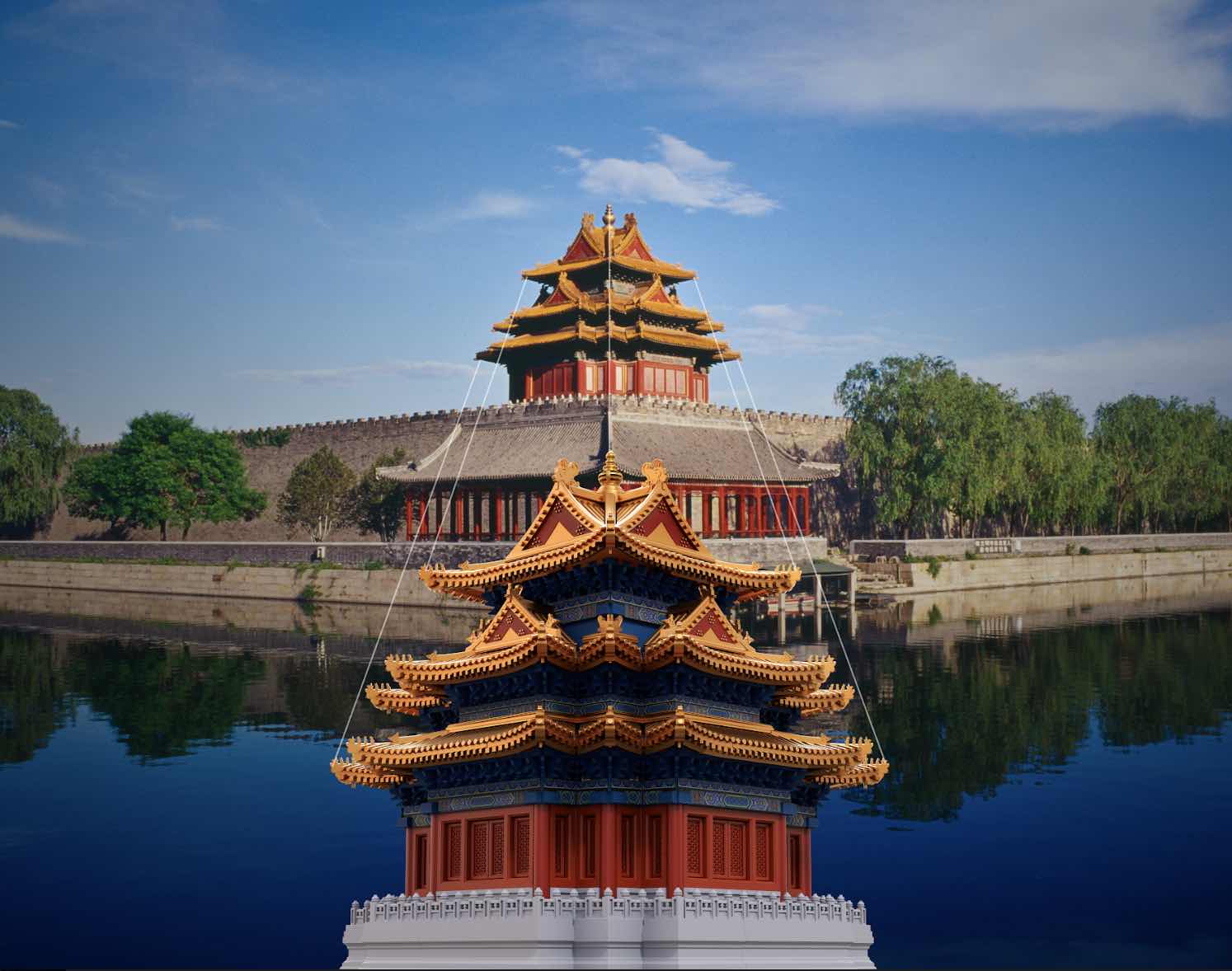Known as the CEO of Beijing Aiqi Technology as well as lead designer of mortise and tenon blocks, Yang Zhang has been committed to the heritage of traditional Chinese mortise and tenon culture. Having taken the Turret of the Palace Museum with a history of 600 years as the prototype, Zhang created a turret on a 1:81 miniature restoration, using the millennium mortise and tenons, aiming to promote this wonderful traditional technology.
Q: Can you give a brief introduction of mortise and tenon technology?
A: Mortise and tenon are the main composition methods of ancient Chinese architecture, furniture and other wooden instruments. It is considered to be the essence of traditional Chinese woodworking. The creation and development of mortise and tenon work reflects the culture and wisdom of the ancients. With China’s encouragement on traditional culture and heritage, mortise and tenon construction has gradually become well-known and popular. But the extensive use of new materials in modern society has made mortise and tenon construction become less common and the culture is also on the verge of being discontinued. As a promoter of mortise and tenon culture, I hope to promote mortise and tenon technology, and fill the gap of this culture.
Q: Why did you choose the Turret of the Palace Museum as the model?
A: The selection of the theme contains multiple factors. First of all, the Turret of the Palace Museum in the Forbidden City carries 600 years of Chinese history. It is an ancient building with profound cultural connotations. As the most complex and beautiful turret in the royal architecture, the Turret of the Palace Museum is the guardian of the palace. The way it is laid out is also very elaborate. Throughout the design process, the biggest challenge to our design team is the technical difficulties. The construction of the turret is varied, skillful and directional and not just a simple patchwork. The final product contains 715 mortise and tenon parts of 79 types, including dovetails, straight mortises, backwards mortises, through pins, riding mortises, hitching mortises, and T-tenons, etc.

Q: What is the specific differences between the model toy and ordinary building blocks?
A: This is a real model work made of mortise and tenon parts. Based on the inheritance of millennium craftsmanship, the Millennium Mortise and Tenon Building Block incorporates the STEAM concept, the use of which adds new energy to traditional mortise and tenon structure. Consumers can now develop and practice new behaviors such as interdisciplinary learning, hands-on skills and innovative thinking. This is a breakthrough for the entire building block industry. The combination of mortise and tenon block components are interconnected to produce a stable structure in three directions, which is completely different from the straight-insert blocks that rely on material friction.
Q: Can you share some of the production process?
A: Firstly, we did a lot of data search and field research to determine the idea of product design, including the presentation form, the innovation or upgrade of mortise and tenon application, how to integrate cultural elements, etc. In the process of modeling design, we made the drafts first and then subdivided it into small steps. The design concepts of misalignment, restriction and avoidance are used to create the specific connection between modules. We combined the module design with modern technology. After the modeling was completed, we had to take into account the correction of visual effects while going through a lot of verification schemes and modifications.
Q: What does this project mean to you in particular?
A: Block toys are one of the largest categories in the Chinese toy industry. I hope to incorporate the beauty of traditional Chinese culture into the building blocks and encourage everyone to observe, think and express the world with a mathematical eye. This has been an important factor for me to lead the industry into the all-ages building block market. Mortise and tenon technology is both the soul of Chinese structures and a valuable legacy of the world’s architectural culture. This traditional Chinese technology is now influencing the design direction of modern architecture. I think adding modern attributes to it is the best way to carry forward the excellent traditional culture.
Advertising disclosure: We may receive compensation for some of the links in our stories. Thank you for supporting LA Weekly and our advertisers.
